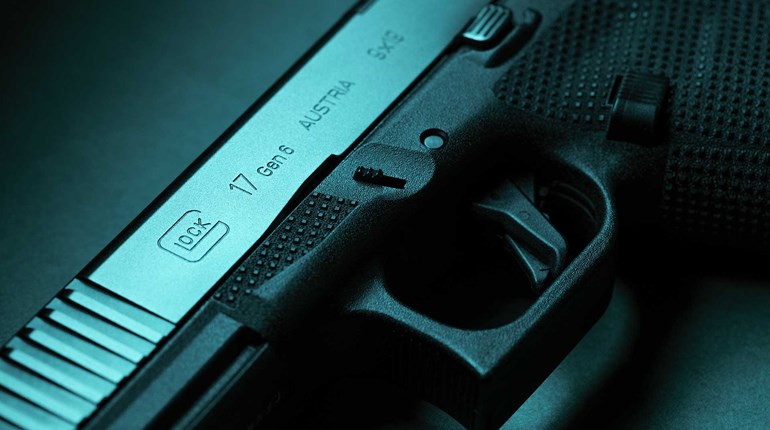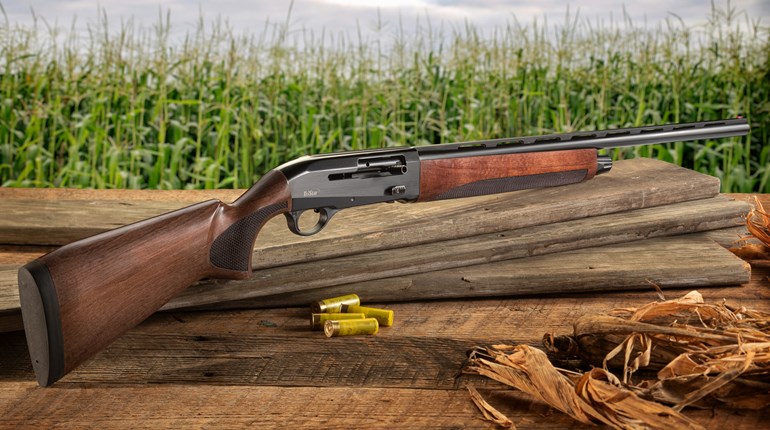
Springfield Armory has just released a tiny, new, striker-fired pistol called the Hellcat that holds an astonishing 11+1 rounds of 9 mm ammunition and is available in an optics-ready version.
There, I avoided burying the lede. However, truth be told, you’ve probably heard about the Hellcat by the time you read this. You’ve also heard the whoosh as they flew out of gun stores, the muzzle blasts punctuated with manic laughter as they’ve been fired, the gnashing of teeth from the rest of the firearm industry and the joyous chants of “Cha-ching” emanating from central Illinois.
A Little History
When the execs at Springfield Armory tell you that the company is moving in a new direction, it’s big news. Consider that the very name Springfield Armory drips with tradition, evoking America as the Arsenal of Democracy and the heroic ginning up of firearm production to save the world a time or two. The namesake Illinois company long cashed in on the association with the U.S. government-owned arsenal in Massachusetts and logically produced 1911s and M1As that cemented the mental connection between the original entity and the commercial company.
That traditionalist approach worked well (and still does). However, when Glock stood the handgun industry on its collective head and the A2 version of the M16/AR-15 turned that rifle from a red-headed stepchild into the darling of American rifles, Springfield prudently got on board, first by acquiring the rights to market a Croatian-built, polymer-frame, striker-fired pistol as the Springfield XD and, more recently, with the introduction of the Saint, the company’s own AR-15.
The Hellcat is no new iteration of the XD. Far from it. The XD was an existing platform that Springfield adopted. The Hellcat, on the other hand, is the result of the company compiling a laundry list of design objectives and having a pistol built specifically to meet them. As Springfield Armory Media Manager Mike Humphries explains, “The Hellcat represents the first step in a new direction for Springfield Armory’s polymer handguns. Its design is the result of very specific parameters laid out during the design phase, with the goal of creating the ultimate concealed carry handgun. The pistol you see is the result of those efforts, and we think it achieved this goal admirably.”
Back to the Future
Yes, like any feline, the Hellcat lands on its feet—all four of them—and is now crouched to spring on the market. Unlike other cats, though, this one has at least 11 lives.
Huh? Eleven, as in the number of rounds of 9 mm held in its flush-fitting magazine. That’s not counting another round in the chamber. And, if you opt for the included extended magazine with pinky support, the number of rounds jumps to 13+1. The Hellcat is pretty hellacious.
Springfield Armory says that the Hellcat took two years from concept to creation. To me, what is so impressive is the foresight or “lead,” if you will, given two years development time. Usually, if you conceive of a product two years early, that product or many of its features risk being obsolete by the time the product gets to market. Well, the Hellcat didn’t just land on all fours—it landed square on the leading edge of pistol development.

If you want to know where the handgun industry is right now, look no further than the Hellcat. It has a ledge-style rear sight for one-handed racking of the slide against a belt or hard edge in an emergency. The front sight contains self-luminous tritium for low-light use and the rear has a U-notch with a bright, white semi-circle in the rear face. The grip frame has a slight beavertail that extends over the web of the shooting hand to limit muzzle rise and aid sight-picture recovery. The grip frame is stippled rather than checkered, for the most purchase in any conditions. The trigger is actually flat-faced, just like the pricey aftermarket units that so often adorn tricked-out competing pistols. There are dual, stippled rests on the dustcover to accommodate both the trigger finger and weak-hand thumb. There’s even a stand-off-type device at the muzzle that prevents the slide from going out of battery when the muzzle is pressed up against the target.

That’s quite a list—and it’s not complete. There’s also a loaded-chamber indicator and an accessory rail, features increasingly popular on carry guns. But there are also cocking serrations on top of the slide, a feature I’ve never seen before.
If all that weren’t enough, Springfield simultaneously has introduced an OSP (Optical Sight Pistol) version having a pre-cut slide that is ready to accept a mini red-dot scope, and which is offered for only $30 more than the standard model.
What it Means
I’m going to take a moment now and sum this up, because it’s pretty darn remarkable. Springfield Armory has just introduced the highest-firepower, subcompact pistol in the world chambered in a service caliber. That’s a pretty noteworthy achievement. But, that’s only half of it. At the same time, this same pistol is the most feature-laden, state-of-the art carry gun on the market. That constitutes a “This changes things” development.
Handling a Hellcat for the first time is a little like holding a smartphone for the first time. No matter what my junior editors say, the internet is a fairly new and amazing thing. And the cell phone is a fairly new and amazing thing. And someone, somehow combined them. And the end product is so much more than even the sum of those things.
In terms of handgun design, OK, double-stack, polymer-frame subcompact 9 mm pistols are not quite new (the Glock G26), true, but the Hellcat is a whole order of “minitude” smaller. In fact, Springfield appropriately describes such pistols as “micro compacts.” Micro compacts are fairly new and definitely amazing. And mini red dots are also new and amazing. And now they are combined. Yet the Hellcat is so much more.

Changing the Paradigm
I carry every day. It’s a nuisance I have learned to accept. I don’t live in a dangerous area, I mind my own business and I pride myself on my manners. I carry every day because A) “You never know” and B) My advice would be worthless if I didn’t.
I break carry guns into two broad categories: Pocket guns and belt guns. Due to a shameful flaw in my physique (I have no butt), I can’t comfortably carry a lot of weight for long periods. That has meant an aluminum-frame .38 Spl. revolver or a single-stack micro 9 mm semi-automatic in my front pants pocket. My belt gun, a home-assembled Glock G19L, rides on a tightly cinched belt whenever I can cover it and for as many hours as I can stand it. I’ve been saving my pennies to purchase a G48, though.

But suddenly, Springfield President Denny Reese has leaned forward and unleashed the Hellcat. We don’t usually directly compare guns here, but that’s what I literally did when I saw the Hellcat. I drew my pocket pistol, made it safe and set it atop the Hellcat. My pistol was smaller, but not by much. I grabbed my belt gun and realized that with the extended magazine installed, the still-diminutive Hellcat held only one round less—in the same tactically effective caliber. (Yes, Hades’ feline is rated for +P ammunition.)
Moreover, my belt gun is customized in all sorts of ways, but do you know what Springfield calls all my little enhancements? It calls them standard features.
The Hellcat messed with my head, man.

Practical Tests
I inserted the Hellcat in my Galco Pocket Protector holster and it fit like a glove. I slipped the combo into my front pants pocket with the flush-fit magazine in place. Unloaded, it felt like my regular carry piece, loaded. Fully stoked, there was some noticeable difference, but I’m not sure if the additional weight would dissuade a “normal” person from carrying it, especially given the comfort of having a dozen rounds on tap. Practice draws were very good. The Galco provides excellent clearance for a firing grip before you yank the pistol up and out. With the aforementioned magazine installed, the only thing snagging was the holster’s hook inside the pocket, exactly like it’s supposed to.
When opting for belt carry using a CrossBreed The Reckoning IWB tuckable holster, I kept the extended magazine installed. Since you have to wear a covering garment anyway with an IWB, the size of the magazine didn’t matter. The extended magazine gives you a full, hand-filling grip as well as two additional rounds. It was light and fairly comfortable, even though it usually takes me awhile to get used to a belt/holster/gun combination.

I gravitated to the “plain”-slide version of the pistol as I am a carry-gun minimalist, but the OSP model is the better purchase in terms of versatility and resale value. It has the same iron sights (including the tritium), but they can readily be supplemented with the recommended brands of mini red-dot scopes (the Shield RMSc and JP Enterprises’ JPoint). What’s more, the red-dot scope sits in the slide and co-witnesses with the standard iron sights, meaning that you only have to assume your usual, well-practiced sight picture and you’ll be able to see the dot. Change your focus to that dot and it and your target will be on the same focal plane. Welcome to shooting’s Brave New World.
Home on the Range
At the range, the Hellcat really performed. The sight picture is truly excellent: Bright, simple and clear. Trigger pull consists of a little take-up, then a low wall, followed by a fairly sudden (for a striker-fired pistol), but predictable break with just a slight increase in pressure. The break isn’t a surprise, and I don’t want it to be. That’s for target guns.

There was a tendency for the slide not to lock back on the last shot. That may have been a magazine issue, though it still needs to be addressed. Tactically speaking, it’s only an issue if you happen to be carrying a reload or second gun, something this pistol may obviate.
Using the base model, my first shot at 7 yards was right into the heart of a reduced-size silhouette target. I eventually displayed a tendency to push shots left if I didn’t use sufficient weak-hand pressure, but that’s my bad habit.
Rapid head shots through one magazine were no trouble. However, after quickly firing a second magazine and retrieving the target, I realized my point-of-impact changed when I went to the flush-fit unit. The pinky-finger rest of the extended magazine allowed me to naturally lever down the muzzle and put my shots in the center of the forehead. However, the absence of that leverage in the flush-fit caused my rapid-fire shots to strike high, cutting a crown of holes in the silhouette’s “scalp.” Not ideal, mind you, but I bet it would sting when he combed his hair.
We did the accuracy testing for the iron-sighted model at 7 yards because that’s what the gun’s dimensions called for, according to our protocol. The OSP model, though, tosses protocol out the window. We’re talking 25-yard head shots from a pistol with a 3-inch barrel.
This Hellcat takes pole position in the carry-gun race (hmm…Polecat?). It has virtually every feature you can think of, holds a whole heap of cartridges and is absolutely miniscule. It’s a primary pistol in a backup-gun-sized package. In the couple of escalating situations in which I was armed only with my pocket pistol, I distinctly remember thinking “I wish I had my belt gun right now.” I’m not sure that would happen with the Hellcat. And had I been armed with my belt gun, I might have longed for the Hellcat OSP with a mini red-dot affixed.
I believe this new pistol is going to leave us all with a lot to think about.






































